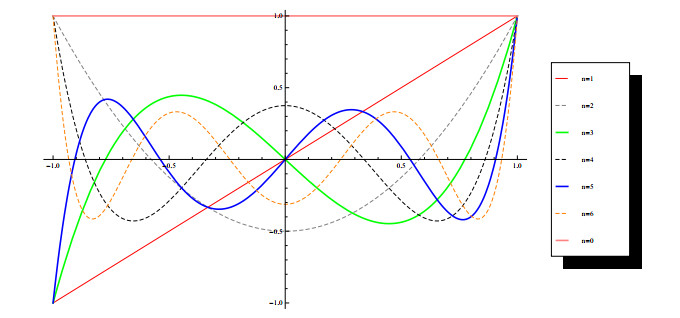1.
Introduction
Fractional order models [1,2,3,4,5] have important applications in materials sciences, information science, and so on [6,7,8,9,10,11,12,13,14]. Reproducing kernel functions [15,16] in reproducing kernel Hilbert spaces [17,18,19,20,21] and related theory have important application in stochastic processes, signal analysis, machine learning and pattern recognition [22,23,24,25,26,27,28,29,30,31,32]. the reproducing kernel method [6,7,8,9,10,11,12,13,14] can not only obtain the exact solution in the form of series but also obtain the approximate solution with higher accuracy, the method has been widely used in linear and nonlinear problems, integral and differential equations, fractional partial differential equation and so on [22,23,24,25,26,27,28,29,30,31,32]. In [33], we use reproducing kernel interpolation collocation method to solve the linear integro differential equations of fractional order.
In this paper, reproducing kernel method with reproducing kernel function in the form of Jacobi polynomials is applied to solving the following variable fractional order nonlinear integral differential equations:
where 0<α(x)⩽1, 0<β(x)⩽1, fn(x,u1(x),u2(x)),n=1,2 and kij(x,t), i,j=1,2 are given functions. Dα(x)u1(x) indicates the α(x) is the Caputo fractional derivative defined of u1(x), Dβ(x)u2(x) indicates the β(x) is the Caputo fractional derivative defined of u2(x).
Definition 1.1. The Caputo fractional derivative operator of variable order 0<α(x)≤1 is defined as
2.
Reproducing kernel space
The well-known Jacobi polynomials are defined on the interval [−1,1] and can be generated with the aid of the following recurrence formula:
and
The weight function of Jacobi polynomials is ω(t)=(1−t)μ(1+t)ν,t∈[−1,1]. If μ=ν=0, Jacobi polynomials are Legendre polynomials, if μ=ν=−12, Jacobi polynomials are the first chebyshev polynomials, if μ=ν=12, Jacobi polynomials are the second kind of Chebyshev polynomials. Some polynomials are shown in Figures 1–3.
In order to use these polynomials on the interval x∈[0,1]. Let t=2x−1,t∈[−1,1], the shifted Jacobi polynomials are denoted by Jμ,νi(x). Then Jμ,νi(x) can be generated from:
and
The analytic form of the shifted Jacobi polynomials Jμ,νi(x) of degree i is given by
and
Definition 2.1. Let
The inner product and norm are defined as:
where ω(x)=xν(1−x)μ is a weight function. So, the shifted Jacobi polynomials have the following properties:
where
Definition 2.2. Let
Its the norm as same as the norm of Hn[0,1]. From [33], we can prove that Hn[0,1] and ˉHn[0,1] are two reproducing kernel Hilbert spaces. The reproducing kernel of Hn[0,1] is
The reproducing kernel of ˉHn[0,1] is
Definition 2.3. The inner product space is defined as:
its inner product and norm are defined by
It is easy to verify that ˉHn[0,1]⨁ˉHn[0,1] is a Hilbert space with the definition of inner product (2.12).
Some reproducing kernels are shown in Table 1 and Figures 4–7.
3.
The reproducing kernel method
To solve Eq (1), let
So, Eq (1) can be turn into Eq (3.2).
where
The operator L: ˉHn[0,1]⨁ˉHn[0,1]→H1[0,1]⨁H1[0,1] is a bounded linear operator.
Assuming that {xi}∞i=1 is dense on the interval [0,1], put ϕijk=l∗ijkxk(x), where l∗ij is the adjoint operator of lij. From [33], we have
Putting
Theorem 3.1. For each fixed n, {Ψij}(n,2)(1,1) is linearly independent in ˉHn[0,1]⨁ˉHn[0,1].
Theorem 3.2. {Ψij}(∞,2)(1,1)is complete in space in ˉHn[0,1]⨁ˉHn[0,1].
Proof. See of Theorems 3.1 and 3.2 in [33].
Using Theorems 3.1 and 3.2, the exact solution of Eq (1) can be expressed as
and truncate the infinite series of the analytic solution, we obtain the approximate solution of Eq (1).
If we can obtain the coefficients of each Ψij(x), the approximate solution Um(x) can be obtained also. Use Ψij(x) to do the inner products with both sides of Eq (3.5) and let u1,0(x)=u2,0(x)=0, we have
Letting
It is obvious that the inverse of A2m exists by Theorem 3.1. So, we have
Theorem 3.3. Let U∈ˉHn[0,1]⨁ˉHn[0,1] be the exact solution of Eq (1), Um,n be the solution of (3.6). If
and
0<c<1, then Um,n converges uniformly to U [17].
4.
Numerical experiment
Example 1. We consider the following nonlinear integro-differential equations of fractional order [34].
(1) Where
The exact solution u1(x)=x, u2(x)=−x, The numerical results which of Example 1 for m=10,μ=ν=0,n=2 are given in Table 2, and the absolute errors of this example for m=10,n=2 are given in Figures 8 and 9.
(2) Where
The exact solution u1(x)=x, u2(x)=−x. The absolute errors of Example 1 for m=10,μ=ν=0,n=2 are given in Figures 10 and 11.
(3) Where
The exact solution u1(x)=x, u2(x)=−x. The absolute errors of Example 1 for m=10,μ=ν=0,n=2 are given in Figures 12 and 13.
Example 2. We consider the following linear integro-differential equations of fractional order [34].
Where α=β=12,
The exact solution u1(x)=x2, u2(x)=−x2. The absolute errors of Example 1 with m=10,n=5 are given in Tables 3 and 4 and Figures 14–19.
5.
Conclusions and remarks
In this paper, fractional nonlinear integro-differential equations of variable order have been solved by reproducing kernel interpolation collocation method with reproducing kernel function in the form of Jacobi polynomials. By comparing the obtained numerical solutions to the exact solutions of the fractional nonlinear integro-differential equations of variable order, it is indicated that our approach is powerful for variable order time fractional nonlinear integro-differential equations. All computations are performed by the Mathematica 7.0.
Acknowledgments
The work is supported by the Natural Science Foundation of Inner Mongolia [2021MS01009].
Conflict of interest
The authors declare that there are no conflicts of interest regarding the publication of this article.










 DownLoad:
DownLoad:





















